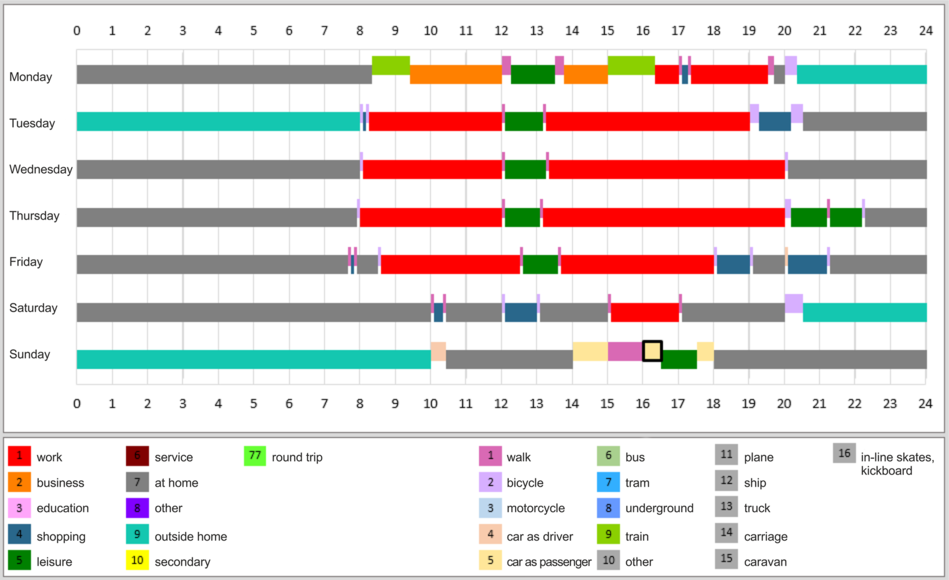Data processing
The plausibility of each trip and tank diary is controlled individually. A visualisation software developed at IfV is used for the validation of data. The graphic below shows the visualisation of a trip diary with the visualisation software.
In the next step the data are thoroughly weighted. The purpose of weighting is to adjust social-demographic variables of the sample to the proportion observed in the population. Mobility quantities calculated using the extrapolating factors generated from the data weighting can be considered representative of the German population. The weighting of the sample for the fuel consumption and car mileage survey also aims to ensure that the obtained figures are representative of the German registered car fleet.
All data are filed in data sets. The German Mobility Panel data consist of seven data sets for each survey campaign. Six of these data sets represent everyday mobility and two data sets provide datas for the car mileage and fuel consumption survey as follows:

The survey data of the German Mobility Panel is hosted by the Clearing House of Transport at the German Aerospace Center (DLR). You can order the data there.
In order to determine the quality of the survey, it undergoes standard analysis in every wave of the survey. For example, the number of household members who fill in the trip diary and willingness to participate in the second and third year is checked, as well as if "survey fatigue" appears (for example short trips are no longer reported in the course of the travel week) and how the fuel consumption figures of the same car change in consecutive years.


